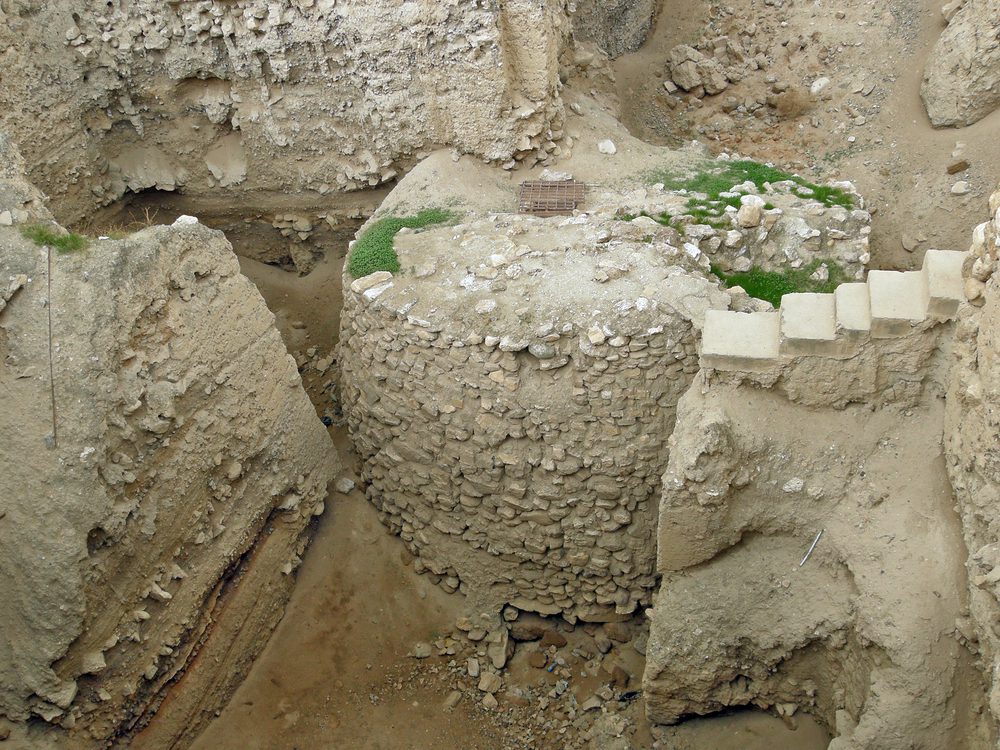The Walls of Jericho are one of the most iconic sites mentioned in the Bible. While most scholars say the Bible’s famous account of the war that took place there cannot be verified, the massive stone walls of this Neolithic settlement have been found by archaeologists, many of whom believe it’s one of the oldest towns in the world.
The ancient town of Jericho is found 10 kilometers (6.2 miles) northwest of the Dead Sea, around 1.5 kilometers (0.9 miles) north of the modern city of Jericho. Archeological work has been carried out here since the 19th century. In 1868, Charles Warren carried out an excavation that revealed the city of Tell es-Sultan in Palestine was the site of biblical Jericho.
Its famous walls – around 4 meters (13 feet) high – were struck down and rebuilt many times over the centuries, but it’s believed they were first constructed around 8,000 BCE. According to UNESCO, ancient Jericho is “one of the oldest known monumental building and fortification systems in the world, as well as one of the main Neolithic centers of agriculture in human history.”
Around 8,000 BCE, the town also featured an 8.5-meter (28-foot) tall stone structure called the Tower of Jericho, which is considered to be the world’s first stone building of this kind. Discovered by archaeologists in 1952, it’s a cylindrical tower that has a top platform that’s reached by 22 steps on the inside.
Oddly, archeologists aren’t totally sure of the tower’s function. Some have suggested it was a geographical marker or perhaps held some astronomical role since it loosely lines up with the Sun on the year’s longest day. Another suggestion is that it was a status symbol, built by the powers that be to boast the success of the proto-city and their settled existence.

Ruins of the mysterious Tower Of Jericho. Image credit: Geothea/Shutterstock.com
Despite its deep historical importance, the city is perhaps best known from the Biblical narrative of the Battle of Jericho supposedly fought between the Israelites and the Canaanites.
As per the Book of Joshua in the Hebrew Bible and the Christian Old Testament, Joshua led the people of Israel to Jericho and marched around the city walls once a day for six days, eventually bringing them down with the sound of trumpets. Under the command of God, the Israelites proceeded to slaughter every man, woman, and child in the town, except for a woman who helped the army with the invasion and her family.
It’s safe to assume the trumpet narrative is completely fantastical, but most scholars now believe the whole account of the bloody war is inaccurate.
In the 1930s, British archaeologists John Garstang conducted excavations at the site and even argued he found the fallen walls mentioned in the Bible, as well as burned remains showing the city’s destruction. He also dated the ruins to around 1400 BCE, which would line up with the Biblical chronology of the battle.
However, work in the 1950s by Kathleen Kenyon threw doubt on this bold claim. She dated the city’s destruction to around 1550 BCE, suggesting its destruction was linked to a well-documented military campaign by the Egyptians against Canaanite city-states.
By the time of Joshua’s supposed conquest, the city had been abandoned for over a century, according to Kenyon’s findings. The story of this bold battle, therefore, is likely to be a little overstated considering there was no one here to conquer.
That’s just one theory, however. Later radiocarbon dating in the 1990s seemed to suggest that the timing of the city’s destruction does line up with the Bible’s account, indicating that the Book of Joshua might possibly contain some elements of truth. Nevertheless, most scholars remain undeterred that this passage of the Old Testament should be read with more than a pinch of salt.
One thing is certain: using the Bible as a historical source is a very tricky business.
Source Link: The Walls Of Jericho May Be A Biblical – And Deeply Fascinating – Lie